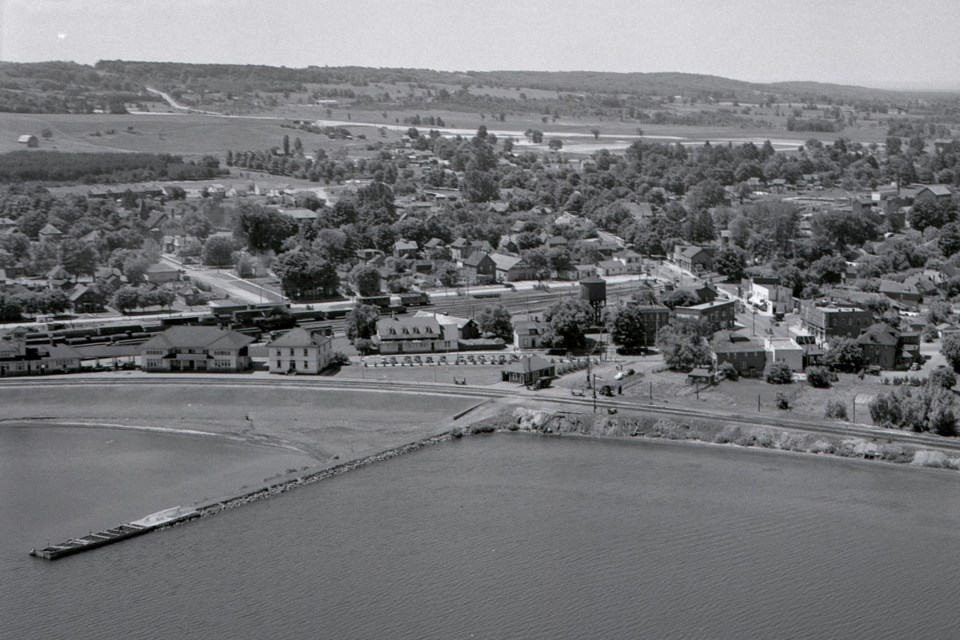What was once Innisfil is now Barrie. Lots of it.
While Innisfil, which celebrated its 200th last year, is technically older than Barrie, which was created in 1833 by most accounts, it is Barrie that has grown by leaps and bounds.
And annexation.
There is a long history of Innisfil parting with land so its northern neighbour could expand its borders.
At one point, Barrie’s southern sister came right up to Kempenfelt Bay in what is now referred to as Allandale — and over to Big Bay Point, which has remained part of Innisfil despite land transfers, or land grabs, depending upon which side of the municipal boundary you were standing on.
Some neighbourhoods in Barrie were once villages in Innisfil — including Allandale, Tollendal, Painswick, Minet’s Point and Holly — thanks to annexation, of which there has been plenty.
In 1891, 500 acres of Innisfil became incorporated as the Village of Allandale, now part of the City of Barrie, and Barrie annexed a further 500 acres in 1897.
In 1967, almost 600 acres were annexed from Innisfil by the City of Barrie to accommodate the establishment of the Formosa Spring Brewery, later Molson’s. The site, including the former Molson Park land, is now home to Park Place.
And another almost 10,000 acres of Innisfil went over to Barrie during annexations in the 1980s.
Longtime Innisfil resident Donna Wice knows that first-hand and has watched her town’s borders shrink.
“There certainly were incremental changes over the years,” she says with chuckle, “and in the '80s in general.
“I remember my husband Merv making a presentation — I can’t remember if it was to the OMB (Ontario Municipal Board) or on behalf of the town of Innisfil — and saying, ‘Don’t take anymore. Don’t take anymore’,” she says of plans to have more Innisfil land going to its big brother to the north.
“Everybody felt so threatened and even the (local) credit union, in a way, because of what was going to happen to the people who would align with Barrie instead of Innisfil. Who knew? There were a lot emotions wrapped up in those annexations.”
Wice has a family connection to what is now a Barrie neighbourhood south of Little Avenue, at one point Line 14 of Innisfil. In a nod to history, the Simcoe County District School Board decided the ‘new’ high school on Little Avenue should should be named Innisdale Secondary School.
“My uncle, Gord Spring, and his partner Doug Homer bought a significant amount of property up there and then the street was named Springhome Road,” she says. “They had the property, but they didn’t have any houses built so they hired my father to come up there and cut the hay so it would look a little neater.
“He farmed on the 9th Line (in Innisfil). That’s a little bit of a drive with all your equipment, but in those days there wasn’t the traffic. He did that for several years until they got the houses built. My mother moved into a new home there in the '70s," Wice adds.
But the political powers that be weren’t done yet with slicing and dicing up Innisfil.
After negotiations between the two municipalities and the provincial government, the Barrie-Innisfil Boundary Adjustment Act came into effect in January 2010, increasing Barrie’s size again, this time by more than 5,600 acres.
Planning went into high gear, the fruits of which are becoming apparent 11 years later as scenes of site preparation and building are everywhere in the city's expanded south end.
For example, what was once an Innisfil farmer’s field south of Mapleview Drive East is now a beautiful new high school that is under construction. At some point, Maple Ridge Secondary School will be surrounded by thousands of Barrie residents.
Wice says the 2010 ‘land transfer’ was not completely well-received by Innisfil residents.
“In a way, we were shocked because it all happened so quietly,” she says. “It was laid out and had to happen, but those of us, perhaps not as aware as we should have been, well, it just happened.
“And yet, I think (this time) Innisfil was more accepting of those Barrie folks."
Some Innisfil residents may have used the word ‘vultures’ over the years, she says.
“Why did we feel that way? That reaction was from the heart. We were saying (to Barrie), ‘Why don’t you take care of what you have? Why do you need Innisfil?”



